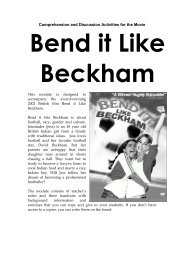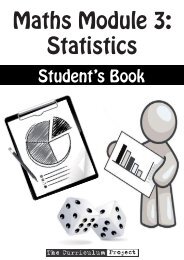Download - The Curriculum Project
Download - The Curriculum Project
Download - The Curriculum Project
Create successful ePaper yourself
Turn your PDF publications into a flip-book with our unique Google optimized e-Paper software.
Ṃodule Elevengoing toWe use going to to talk about future plans – things wehave already decided to do.• I’m going to study maths at university.• Thida is going to be a teacher.StatementsIShe/He/ItWe/You/<strong>The</strong>y’m’m not’sisn’t’rearen’tgoing tolike that.be there.understand.NOTE: We always use the base form of the verb aftergoing to.• Maung Maung is going to have a party.not: Maung Maung is going to has a party.Questions and answersTo make questions with going to, we put am, is or arebefore the subject.1. yes/no questions and short answers.statement:question:She is going to buy a bicycle.Is she going to buy a bicycle?answer: • Yes, she is.• No, she isn’t. / No, she’s not.2. wh- questions• How are they going to get there?• What are you going to do when you graduate?Present continuous for the future1. We can use the present continuous to talk aboutfuture arrangements – things we have alreadyarranged to do.• I’m going to China next month.• What are you doing this evening?2. When we use the present continuous in this way,we either give a future time (next week, tomorrow,tonight, at 6 o’clock, etc.) or we know from thesituation we are talking about the future.• What are you doing tomorrow?• I’m going to the office. I’m meeting the director at 9o’clock.I think so, I hope not, etc.We can use so to replace a that- clause.- Is tomorrow a holiday?- I think so. (= I think that tomorrow is a holiday.)- Will Burma win the World Cup?- I hope so. (= I hope that Burma wins the WorldCup.)NOTE: <strong>The</strong> negative forms of I think so and I hopeso are:• I don’t think so. • I hope not.Module Twelve<strong>The</strong> passive1. We use active verbs when we are interested in theperson or thing which does the action.• My dad’s clever. He built our house.not: My dad’s clever. Our house was built by him.2. We use the passive when the person or thing whichdoes the action is:a. not important• This house was built five years ago.(It doesn’t matter who built it.)b. not known• My purse was stolen yesterday.(I don’t know who stole it.)3. We use by to show who did the action.• This house was built by my father.Statements1. We make the passive with the auxiliary verb to be+ the past participle. To make different tenses, wechange the form of the auxiliary.• I am employed by my organisation.• <strong>The</strong> bananas were eaten by Myint Myint San.• Tea isn’t grown in New Zealand.2. <strong>The</strong> object of an active verb becomes the subject ofa passive verb.• <strong>The</strong> police arrested John last week. (active)• John was arrested last week. (passive)Questions and answersTo make questions, we put the subject after theauxiliary.1. yes/no questions and short answersstatement:question:Rice is grown in China.Is rice grown in China?answer: • Yes, it is.• No, it isn’t. / No, it’s not.2. wh- questions• Where is rice grown?• When were you born?• How many people were killed?86 Language Reference



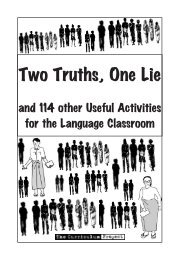


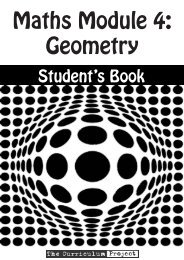

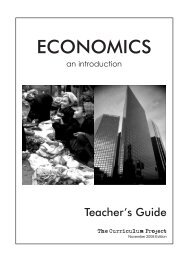
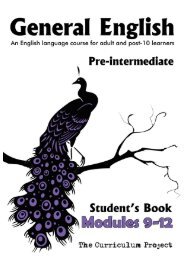

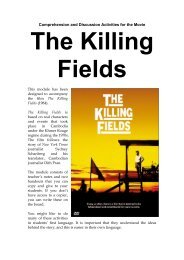
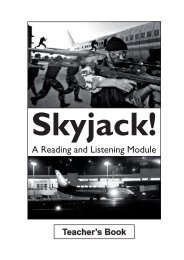
![[Eng] Nov 2012 DRAFT - The Curriculum Project](https://img.yumpu.com/45590859/1/184x260/eng-nov-2012-draft-the-curriculum-project.jpg?quality=85)
